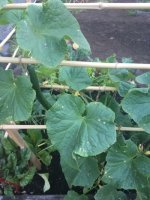Use a walk in tunnel for indoor gardening.
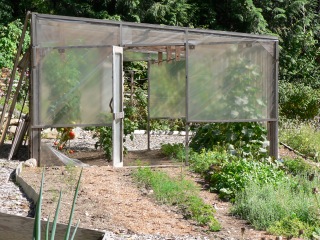
The walk in tunnel is an unheated structure used for indoor gardening.
It can be used as a permanent construction or built to be easily moved around your garden.
It usually consists of a single layer of greenhouse plastic supported by plastic or metal arches or hoops. This structure is large enough to walk and work in.
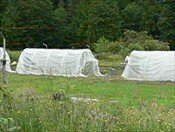 My tunnels are 10 feet wide by 20 feet long with a height to just over 6 feet.
My tunnels are 10 feet wide by 20 feet long with a height to just over 6 feet.What a walk in tunnel used for?
- To extend your growing season - start plants earlier or grow them later in the fall.
- A protected area to start your own vegetable seedlings.
- Protect heat loving vegetables such as tomatoes, eggplants and cucumbers so they will produce more for you.
How to construct a walk in tunnel.
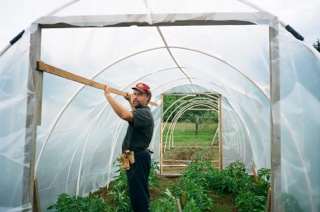
Click on picture to see how to make a tunnel.
Materials are usually light weight and not permanent. I move my tunnels every season as part of my garden rotation .
The pipe I use is a bendable water pipe. A polyurethane piping is the best if you can find it. It is a better choice environmentally.
A white PVC water pipe will work as well but the friction against the plastic will wear it out quicker. The piping is anchored into the ground with a metal pipe or rebar.
For the covering I use a greenhouse weight plastic sheeting 6 millimeter is best. This will last you for several years versus a lighter weight plastic that can tear more easily.
The plastic is secured to the piping with clips or tied and secured to the piping at all four ends. Clips are best if your tunnel is in the open and you get a lot of wind.
The ends can be left open or build a framed door structure or clip a plastic sheet over the end. This will all depend on how permanent your tunnel will be, what you are growing and how warm your plants like it.
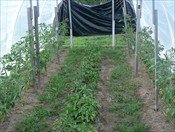 Plastic covering the ends fo the tunnel and help keep the heat in during colder months.
Plastic covering the ends fo the tunnel and help keep the heat in during colder months.I find it easiest to clip a plastic sheet over each end. This keeps my plants happy in the winter months, it can easily be opened for ventilation in the spring and taken off totally for the summer months.
Place a thermometer in the tunnel so you know when you will need to ventilate. Most plants do not like it warmer than 32 degrees Celsius so make sure it does not get too hot.
Opening the ends or lifting the sides off the ground can give your plants the air circulation they need.
If you only have a small garden site and a walk in tunnel is too large of an option for your indoor gardening, perhaps the cold frame would be a better fit for your garden and lifestyle.
Are you looking for a more permanent structure? Something more attractive for your indoor gardening? The traditional greenhouse is most likely for you.
Best plants for indoor gardening:
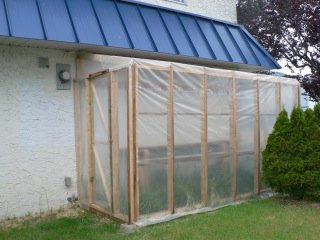
Plant in winter months:
- beets
- carrots
- parsley
- scallions
- lettuce
- radish
- spinach
The best plants for late fall harvesting:
Plant these in late spring or early summer:
- tomato
- cucumber
- carrots
- lettuce
- scallion
- celery
The best plants for overwinter crops:
Plant these in late summer or early fall:
- carrots
- lettuce
- scallion
- parsley
Learn more about growing your favourite vegetables.

Return from Indoor Gardening to Indoor Vegetable Gardening
Recent Articles
-
Vegetable Gardening Frustrations: Lessons for a Better Harvest
Oct 29, 24 07:37 PM
Every vegetable gardener knows that while the rewards are sweet, the vegetable gardening frustrations can be a bit bitter. -
Small Space Vegetable Gardening
Sep 23, 24 05:06 PM
Small Space Vegetable Gardening - Tips for growing vegetables in small spaces. -
Why Fall Gardening?
Aug 16, 24 12:24 PM
Fall Gardening: A guide to a Bountiful Harvest.
